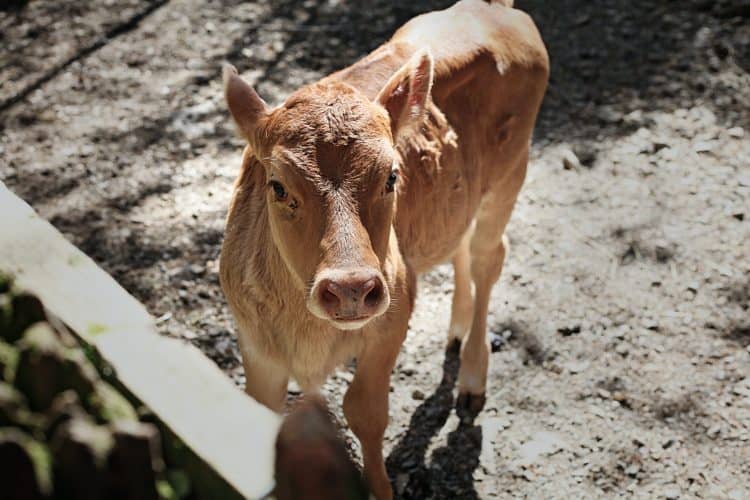Nipples? Bottles? Buckets? or Nipple Buckets?
Which do you choose?
During discussions of raising calves, a common question often arises – what’s the best method for feeding calves? Is it nipples, bottles, buckets, or nipple buckets? Well, the answer is quite simple. The best method of feeding milk is the one that works best for you.
Many producers can make any one of these methods work well. Published research suggests that calves do best when fed from buckets, then nipple bottles, and tend to have the most trouble when feeding from nipple pails. It is generally assumed that higher success with buckets and lower success with nipple pails are due to the difficulty in keeping nipples clean. Milk or milk replacers that are not removed from nipples can lead to a build up of bacteria, leading to disease and death of calves.
However, there are some characteristics and features about each method of feeding liquid. One reason people use bottles is, Full is Full, no measuring needed.
Nipple bottles are the most “natural” of the three methods. Nipples most closely resemble the cow’s teats. This method of feeding liquid is easiest – nearly all calves quickly learn to drink from a nipple bottle (of course, there’s always the occasional “stupid” calf). You can raise the bottle to a sufficient height to allow the calf to attain a natural position – head and neck raised slightly. The main disadvantage of nipple bottles is their size. The vast majority of nipple bottles hold only 2 quarts. So, if you want to feed more than 1 gallon of liquid per day, you’ll need to feed in more than two feedings. There is however now more sizes available and different nipples that help in ease of feeding.
Nipples are the most difficult part of nipple bottles to keep clean. Often, the small hole in the nipple used to equalize pressure in the bottle can become plugged, forcing the calf to suckle extremely hard to obtain its milk. These holes should be checked and cleaned out often.
Buckets are easy to use – after you teach the calf to drink from the bucket. Buckets can hold more liquid than bottles, are easy to clean, and can be easily stored or used for other purposes when not feeding calves. However, teaching a calf to drink from a bucket can be frustrating – for you and for the calf. Drinking from a bucket is unnatural – calves prefer to drink “up”, not “down”. And teaching a reluctant calf to drink “down” can be a real test in patience! In my experience, the best way to teach calves to drink from a bucket is to place two fingers (previously moistened with milk) in the calf’s mouth. Let the calf start sucking on your fingers. Using the other hand, slowly lower the calf’s head into the liquid. As soon as the calf’s mouth reaches the surface of the liquid, I’ll open my two fingers slightly to allow liquid to pass between the fingers and into the calf’s mouth. After the calf has consumed some of the liquid, I’ll slowly remove my fingers from its mouth. Usually, it takes at least two attempts (and often many more!) before the calf figures out what’s happening. Often, it’ll “come up for air” and not be able to find the liquid again. You’ll have to repeat the process. Most calves will learn in a few minutes. Other calves may take several days of effort. It’s important to remember that they’re babies and you’re trying to teach them something quite unnatural. Be patient!
Nipple buckets are a cross between bottles and buckets. They have the advantages of bottles with the capacity of buckets. The most common problem with nipple buckets is improper sanitation. It’s very important to keep the nipples clean. This must be done after each feeding, which is not done on too many farms. If the nipples are not cleaned, bacteria may build up inside, exposing the calf to disease causing pathogens. You can do a good job with nipple buckets, but remember, keep it clean!
Most research suggests that there is little biological advantage to any of these feeding methods. The most important thing to consider is sanitation. Clean bottles, buckets and nipples with hot water and a strong disinfectant. We generally use, an antibacterial soap . After cleaning, let the bottles, buckets, (upside down) and nipples dry before the next use. Keep ’em clean and keep ’em healthy
My one liner is bacteria doesn’t like dry environments .
Calf Star handles feeding equipment for any feeding style and also offer Chlorine Dioxide for your sanitation purposes.
Let Calf Star be your go to for your calf feeding needs.
Happy February.
-Minnie

